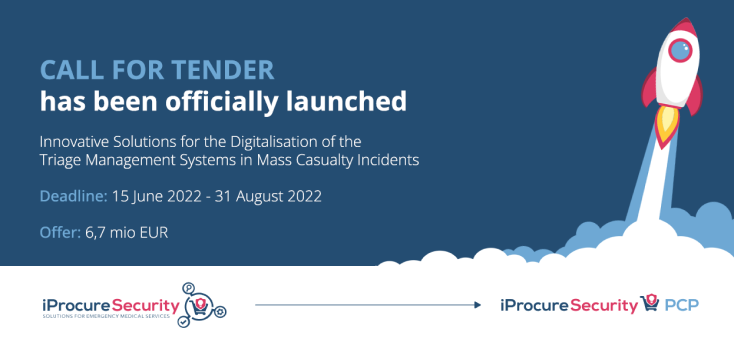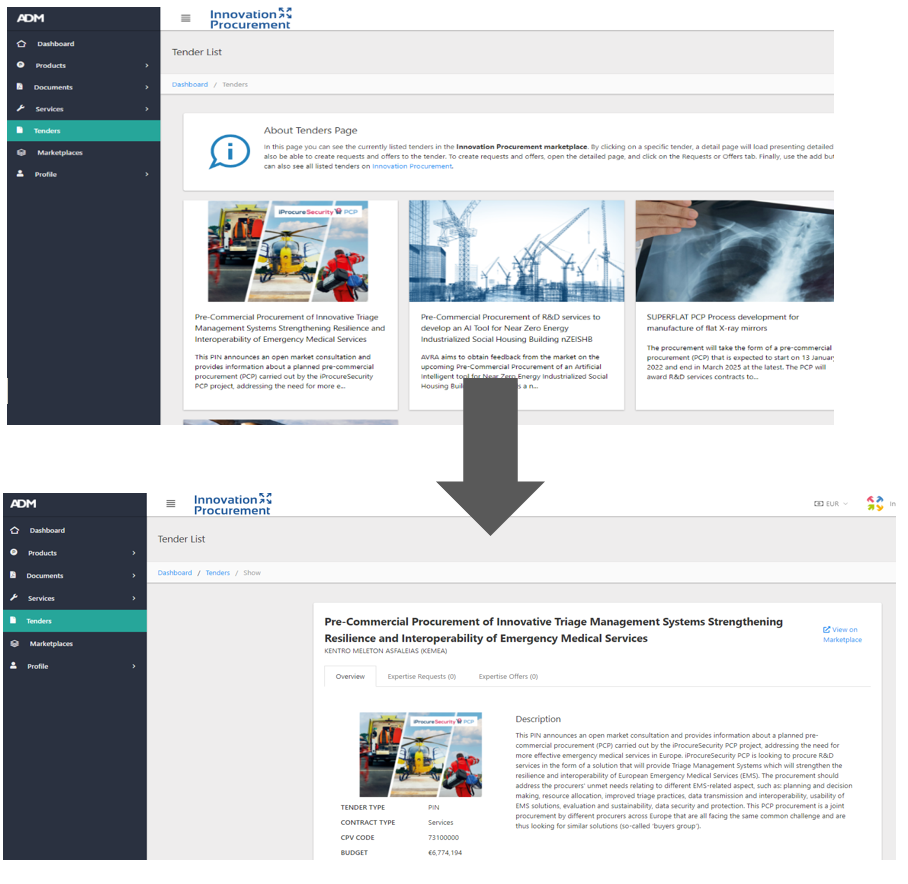
iProcureSecurity PCP Call for Tenders is officially launched!
The project officially launched its 6,7 mio. EUR Call for Tenders. The submission runs on the Innovation Procurement Platform.
The project launched the Call for Tenders, following the Pre-Commercial Procurement initiative, which fosters Research and Development of innovative technologies and allows the Research and Development of innovative disruptive technologies to support the management of Mass Casualty Incidents. The iProcureSecurity PCP focuses on the development of Triage Management Systems solutions for Emergency Medical Services.
Call for Tenders is launched!
The project iProcureSecurity PCP officially launched the Call for Tenders, opening new opportunities for suppliers working on technological innovation applicable in emergency medical fields. To reach the scope, the quality and the efficiency of the project objectives, suppliers will have to take into account:
(a) the combination of innovative technologies;
(b) organisation and structural component in which the solution will be embedded;
(c) the integration of existing national-based systems and procedures; and
(d) technical requirements and use cases which have been created within the project implementation activities.
From a technology perspective the focus area includes means to continuously capture and update triage information, the sharing of information in real time among several stakeholders and the gathering and updating of casualties’ vital parameters.
The iProcureSecurity PCP project has identified four main challenges in the triage management system:
- Triage tracking. The tracking of triage situations is currently done manually by the actors on the field. This makes it quite difficult for the stakeholders to collect the information for an initial overview, to maintain an updated vision of the situation while the latter evolves, and to connect with and update in real time the other stakeholders involved in the rescue activities.
- The iProcureSecurity PCP solution should take into consideration digitalising the existing manual system, and thus, allow to maintain a record of the triaged casualties; updating in real time the data baseline; and to share it with the relevant stakeholder.
- Data interoperability. The data interoperability between different organisations on-site is currently a challenging task, although extremely pivotal for the successful outcomes of rescues in major incidents.
- The digitalised solution provided by the project wants to provide a fully interoperable system which will be able to react and adapt to unexpected changes in the situation. This will also simplify and smooth the decision-making processes for casualty’s prioritisation and resource planning.
- Information handover. Casualties are often handed over to several stations, when mass casualty incidents occur. This also means that the casualties are monitored, checked and treated by different actors. The objective for the information handover is to be as accurate as possible, while also consuming as little time as possible for the personnel involved, which can be a challenging task if factors such as a manually written or transcribed documentation, proprietary systems and potentially semantic or taxonomic difficulties are involved.
- A distribution of digitalised triage information to any authorised data consumer is efficient, consistent and reliable and does not bind human resources of the involved organisations. It also has the inherent advantage of providing a larger amount of information than what is strictly necessary for the supported process step, which would be well beyond the scope of an efficient manual handover.
- Mutable circumstances. In a large-scale incident, the situation can evolve rapidly, involving multiple organisations, carrying out a large subset of routines involving multiple decision points. A manual documentation of these activities is challenging, as it binds valuable resources and is often carried out under stress, impacting the accuracy, thoroughness and correctness of captured information.
- The solution will provide a consistent, chronological, documentation on the triage classification, the treatment received on site, and the handover for transportation. By using consistent reference objects and adhering to standardised data formats, a comprehensive data basis is created throughout an incident, which supports the analysis of how the incident situation evolved on site, and derives insights on how to continuously improve the triage procedure from a long-term perspective
The specific technical requirements which should be taken into consideration during the development of the solution, can be found on the iProcureSecurity PCP Tender Documents on the Innovation Procurement Platform. (more information below).
Innovation Procurement Platform
The iProcureSecurity PCP project developed the Innovation Procurement Platform.
The platform has been designed to provide suppliers with the option to register their organisations, showcase products and solutions – as well as additional relevant documents – and to match interests, and services with other suppliers and relevant partners.
In addition to that, and following the specifications of the iProcureSecurity PCP project, the Platform included among its features the tender submission and evaluation. The embedded system serves as a transparent, intuitive and easy-to-use evaluation process for tenders and, as such, it promotes also an unbiased selection of offers.
Following the needs and specifications of the iProcureSecurity PCP project, the Innovation Procurement Platform will serve the different organisations in:
- Matching and connecting with other suppliers
- Monitoring and checking several tenders
- Getting informed, updated and guided throughout the creation of the proposals
- Submitting Open Tender Proposals
To join the Innovation Procurement Platform, click on the following link:


